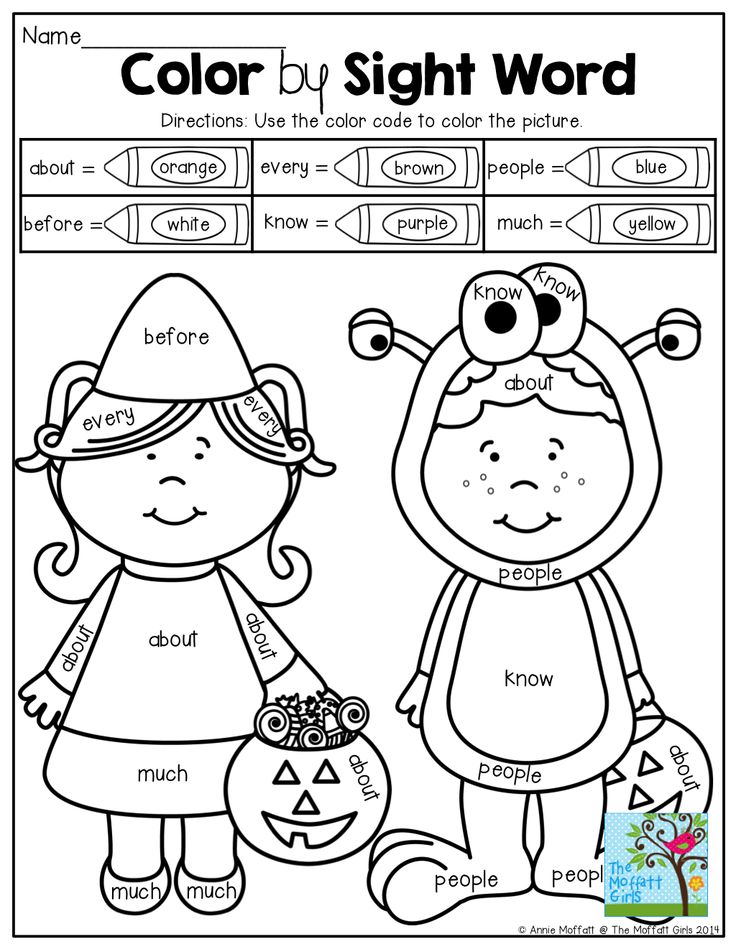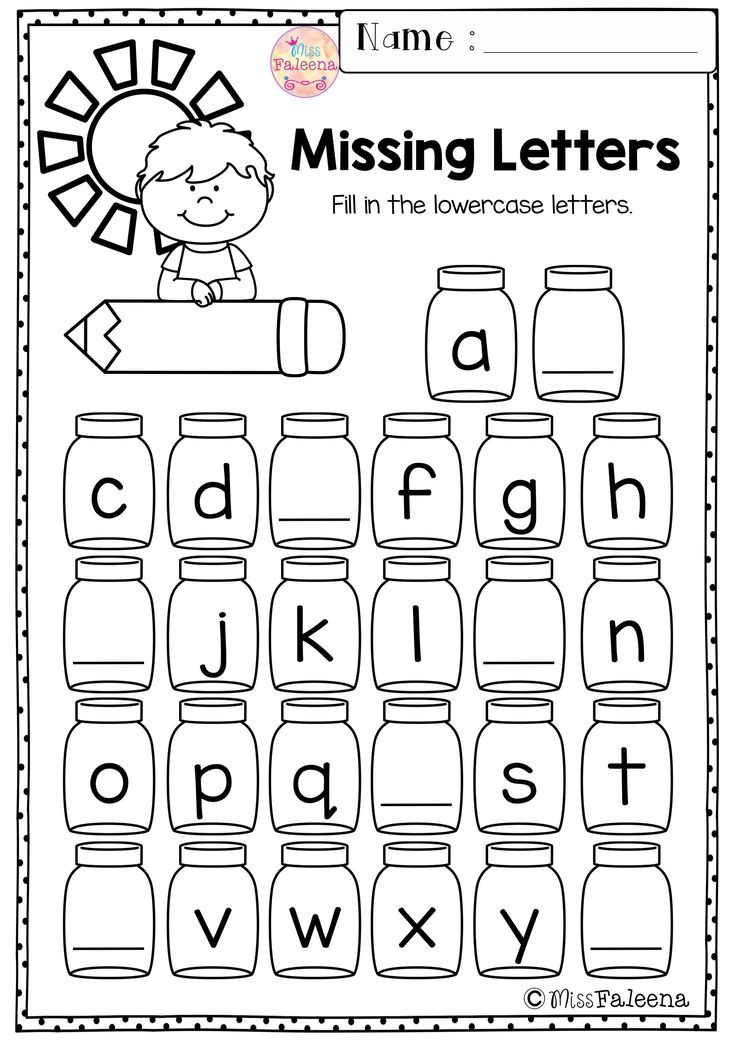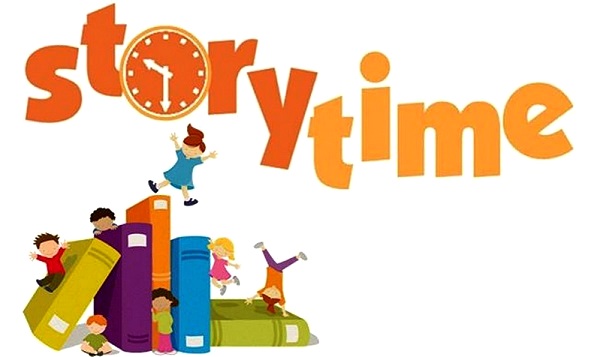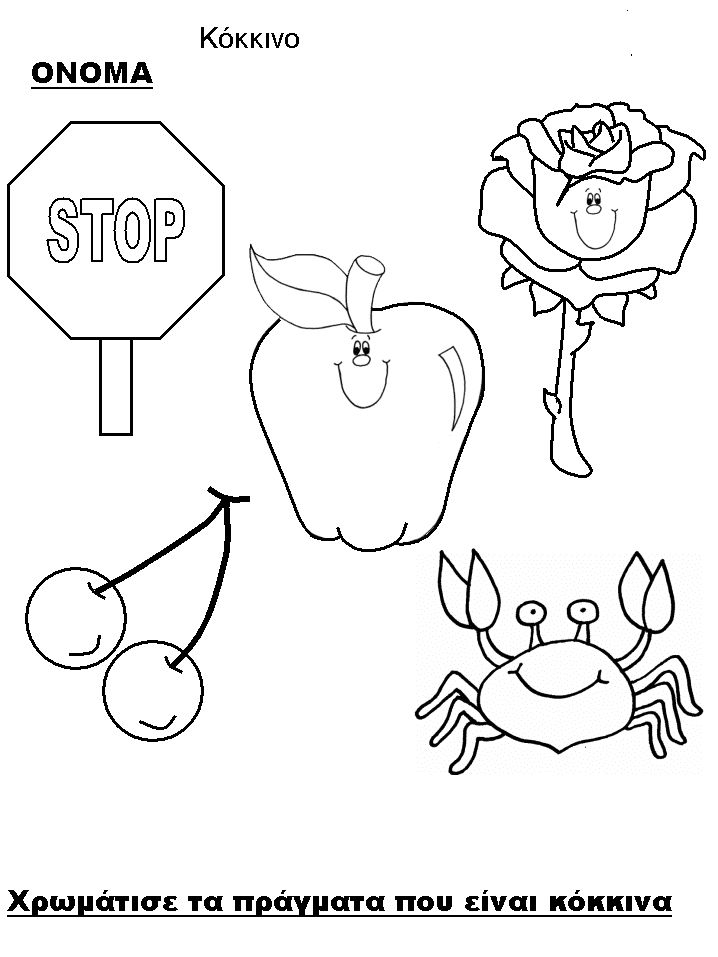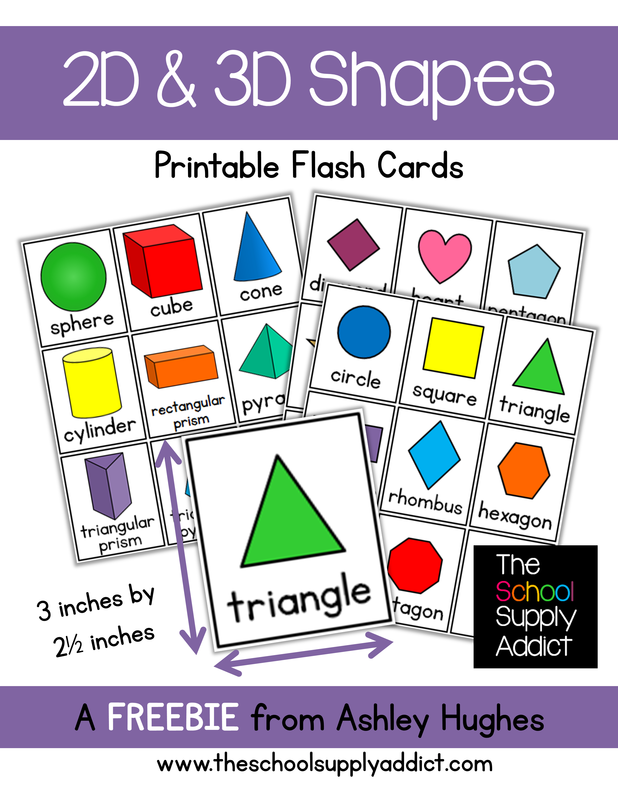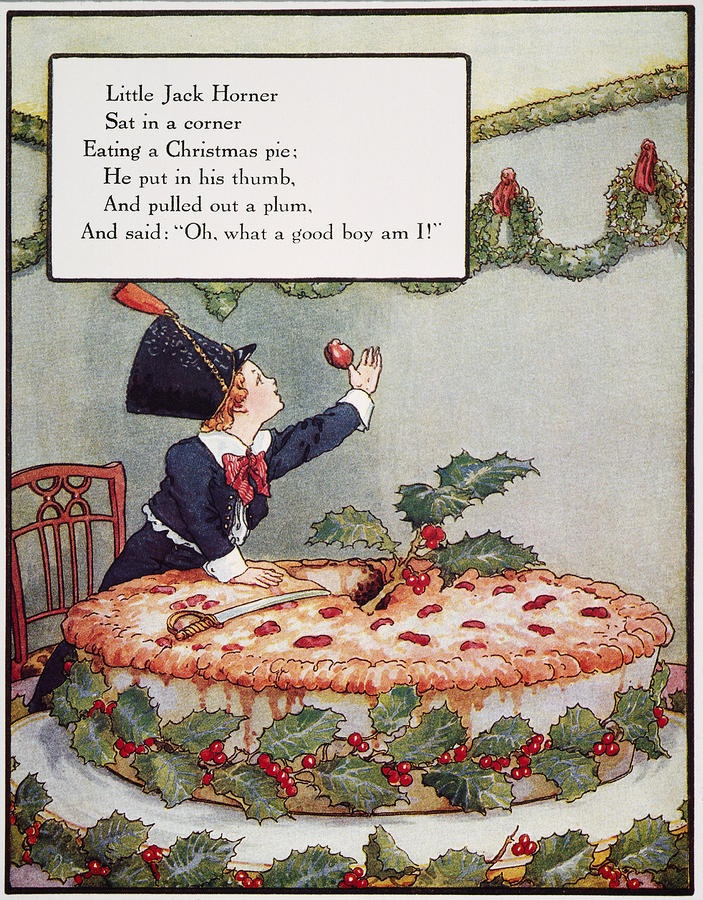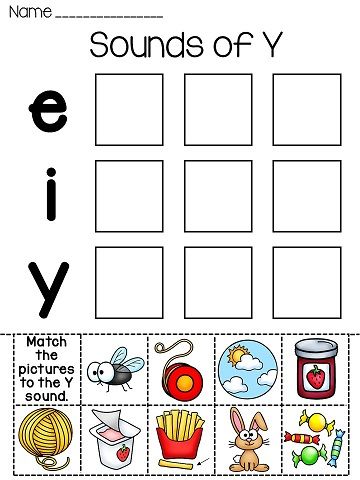Fun activities with sight words
48 Fun Sight Word Activities That Work
Teachers are always on the hunt for great sight word activities. Sight words are any words readers recognize automatically “by sight”—for fluent readers, that’s almost all words! High-frequency words, the most commonly occurring words in written English like those on the Dolch list, are often thought of as the most crucial sight words.
It’s a myth that blindly memorizing every letter in a sight word is the only way to learn it. The science of reading tells us that linking sounds and letters is the most effective way for kids’ brains to learn any word. Many common words are easy to tackle using beginning phonics skills (like “at,” “can,” “him,” etc.), so staying true to a strong phonics curriculum is one way to support kids’ sight word learning. Even irregularly spelled words have decodable parts, e.g., kids can use the sounds of “s” and “d” to help with “said,” even if the “ai” is unexpected. Experts often call these words “heart words” to call out for kids that they should learn the unexpected word parts “by heart.
” (If all this is unfamiliar to you, it can feel overwhelming, but you’ve got this! Check out teaching guru Jillian Starr’s explanation for more help.)
Check out these low-prep and engaging sight word activities for both teaching and practicing words.
1. Map it and drive it
This is a genius way to introduce words with appealing materials: Say the word, represent each sound with a LEGO brick, write letters for each sound, and “drive” to read it.
Source: @droppinknowledgewithheidi
2. Smush play dough for each sound
Set up a routine that works for any word. Play dough squishing for each sound is the ultimate multi-sensory component.
Source: @playdough3plato
3. Map words with a magnet wand
It is so super-satisfying to drag those magnetic dots around! Watch the video below for lots of tips on introducing a word using this process.
Source: @warriorsforliteracy
4. Make a mini book
Lots of handy info in one place for your little learners.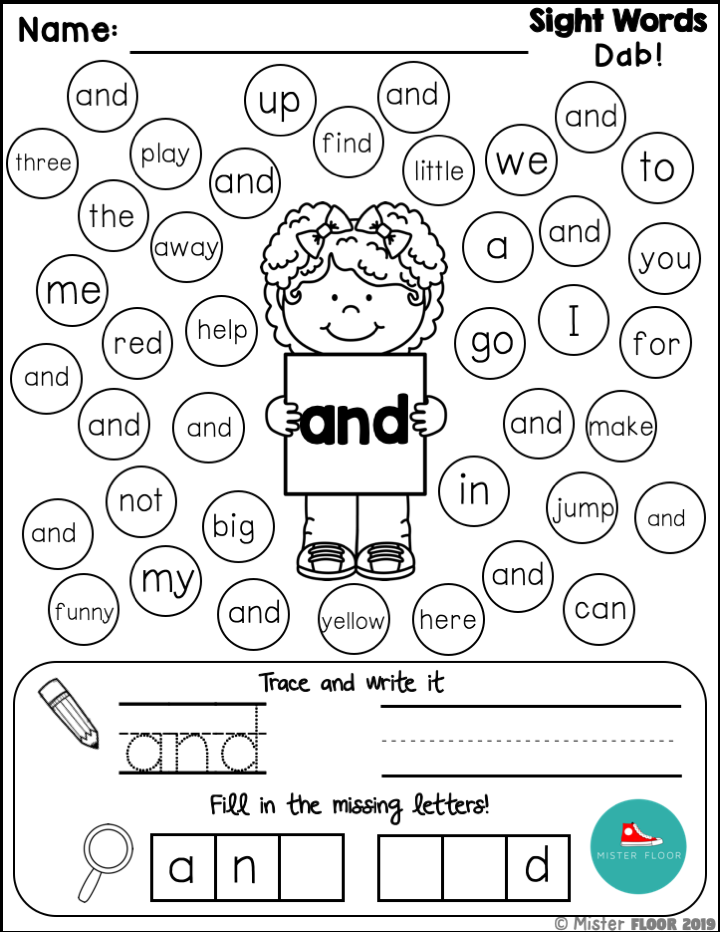
Source: @hughesheartforfirst
5. Tap it, pop it, learn it!
Hardwire those words in kids’ brains with this comprehensive word intro routine. (You had us with the pop its!)
Source: @hellojenjones
6. Find and swat words
An oldie but such a goodie. Find a word in an array and WHACK! Swat it with a fly swatter!
Source: @kids_play_learn_laugh
7. Flip word pancakes
Serve up sight word pancakes while practicing spelling them aloud.
Source: @bee_happy_teaching
8. Wear heart word bracelets
Make kids feel like sight word VIPs.
Source: @teachingmoore
9. Search for sight word balls
Write sight words on ball pit balls with a chalk marker or dry-erase marker. Kids can race around hunting for balls to read and toss in a basket, or hunt through a big tub of balls for a certain word.
Source: @preschoolforyou
10. Start a sight word band
Loud but oh-so-fun! Feel the rhythm while tapping and reading sight words stuck to homemade percussion instruments.
Source: @earlyyears_withmrsg
11. Drive on a sight word path
This is one of many fun ways to use magnetic tiles for learning! Kids love “knocking down” word tiles with a toy car as they read each one.
Source: @travisntyler
12. Use sticky notes to inspire sight word sentences
Have kids stick words on items that give them ideas for sentences. “My Mom said to wear a helmet!” = so good!
Source: @kinneypodlearning
13. Write words on a sensory bag
So easy: Fill a zip-top bag with a small amount of kid-safe paint, seal well, and have kids practice “writing” sight words with their finger or a cotton swab.
Source: @makeitmultisensory
14. Wear a sight word crown
Wear your word proudly and practice reading others’ words. Fun in person or virtually.
Source: @mrsjonescreationstation
15. Play a magnetic-tile board game
We love new ideas for ways to use magnetic tiles for sight word activities.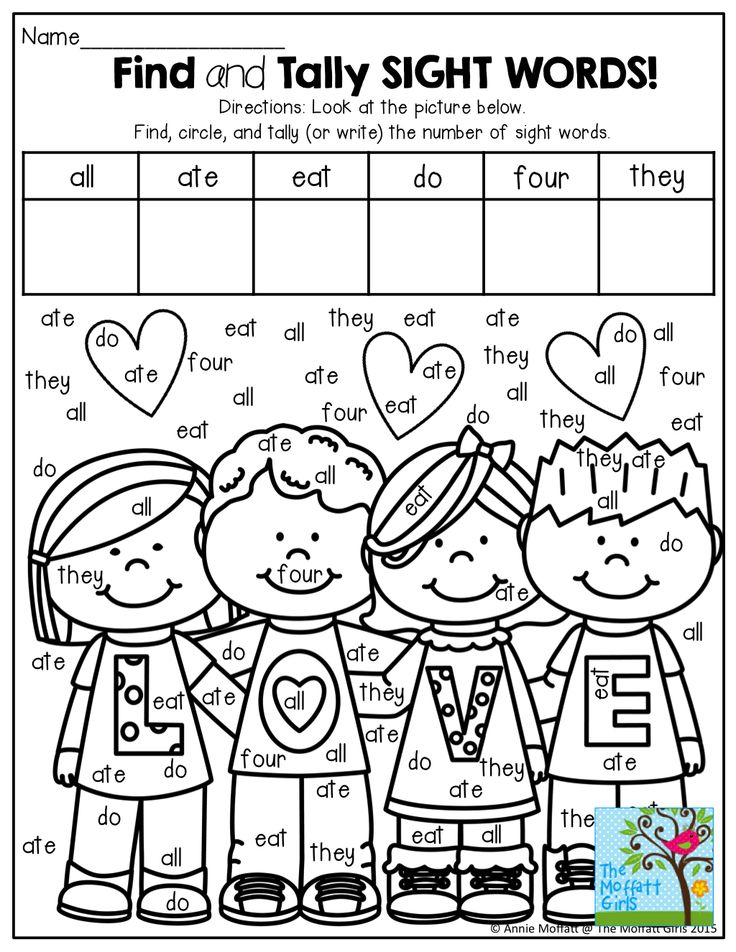 Easy to set up and fun to play.
Easy to set up and fun to play.
Source: @twotolove_bairantwins
16. Spell words to a familiar tune
Get sight words stuck in everyone’s head, in a good way. We’d add a line for chanting the sounds in the word!
Source: @saysbre
17. Feed a word monster
Nom, nom, nom.
Source: @ecplayandlearn
18. Search for the pom-pom under sight word cups
Read all the words as you try to find the cup that hides the prize.
Source: @la.la.learning
19. Play sight word KABOOM
This classroom classic is perfect for sight words. If you need a refresher on the rules, Jillian Starr covers them.
Source: @essentiallykinder
20. Roll and write words
Roll, write, repeat.
Source: @mylittlepandamonium
21. Write words with rainbow colors
Bonus points for aromatic markers.
Source: @mylittlepandamonium
22. Trace words with flashlights
Stock up on batteries because kids never get tired of this!
Source: @giggleswithgerg
23.
 Find words in plastic eggs
Find words in plastic eggsGive kids a checklist of words to find as they open each egg.
Source: @blooming_tots1
24. Spy words around the classroom
Just add a magnifying glass and clipboard to make kids feel like supersleuths!
Source: @readingcorneronline
25. Find words in the morning message
Don’t forget about old standbys! This is one of our favorite ways to get kids to recognize sight words in connected text.
Source: @tales_of_a_kinder_classroom
26. Build words with bricks
Such a great use of extra building bricks!
Source: @raysinkinder
27. Write words in sand
Easy-peasy to set up and keep neat if you use plastic pencil boxes.
Source: @teacherhacks
28. Spell words on a construction site
Bulldozing over each word to read it is the best part!
Source: @planningplaytime
29. Spell words with toy cars
Drive on over!
Source: @lozlovesprep
30.
 Park in a sight word “parking lot”
Park in a sight word “parking lot”This one is easy to modify based on whatever toys are available in the classroom or at home.
Source: @msbendersclassroom
31. “Plant” words in play dough
Watch those reading skills grow!
Source: @planningplaytime
32. Build words in a sensory tub
Because spelling is just more fun when your hands are covered in beans!
Source: @coffeeandspitup
33. Write words on a magnetic drawing board
That eraser track makes for a perfect word card holder!
Source: @moffattgirls
34. Or write words on the window!
Everyone wants a turn to write on the window!
Source: @kindergarten_matters
35. Shhh! Discover words written in invisible ink
Write words in white crayon and reveal them with watercolors on top!
Source: @teachstarter
36. Dot-paint words with a cotton swab
Calming and effective.
Source: @sightwordactivities
37.
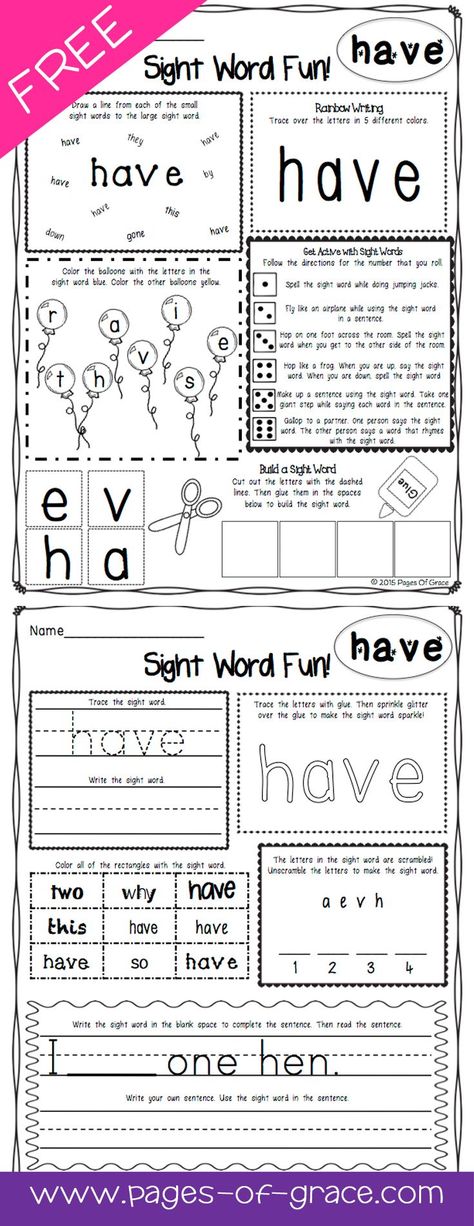 “Type” words on a keyboard
“Type” words on a keyboardBusy day at the sight word office! Use a keyboard cover or any old keyboard.
Source: @lifebetweensummers
38. Read words before heading through the door
The line leader can double as the word pointer during transitions.
Source: @ms.rowekinder
39. Read the word the teacher’s wearing!
Wait, is there something on my shirt?
Source: @theprimarypartner
40. Take a sight word cakewalk
Choose a winning word when the music stops!
Source: @joyfulinkinder
41. Play sight word hopscotch
If you can’t get outdoors, tape on the floor works just as well.
Source: @wheretheliteracygrows
42. Play tic-tac-toe
I’ll be team “the.”
Source: @create_n_teach
43. Go sight word bowling
No bowling pins? Use half-filled plastic water bottles instead.
Source: @thecreativeteacher_
44. Ready, aim, read
Just throw a beanbag at a word target if foam darts are a no-go.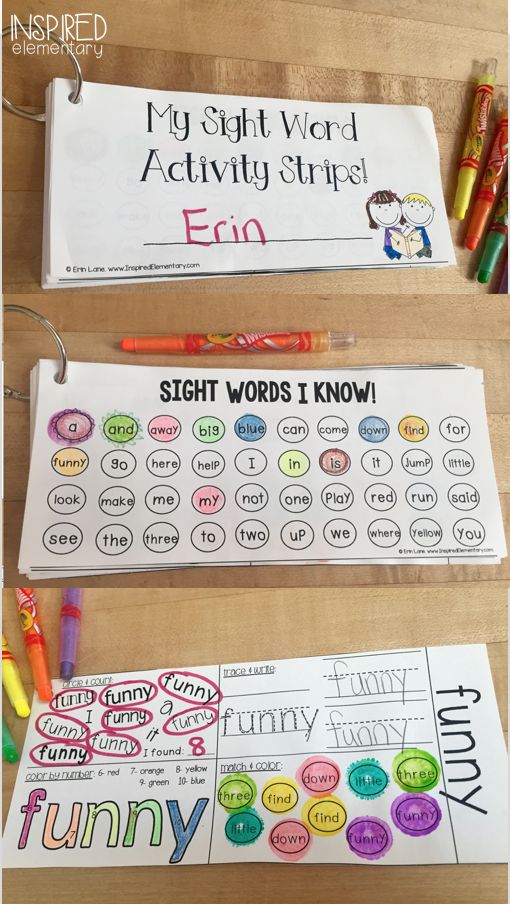
Source: @laurens_lil_learners
45. Play muffin tin ball toss
Toss and read. It’s easy to use colored muffin cups to prep different sets of words.
Source: @homeschooling_fun_with_lynda
46. DIY sentence flash cards
Authentic use of words in context for the win.
Source: @teachertipsandtales
47. Play sight word checkers
King me! If kids don’t have a partner available, they can “play” with a stuffed animal and get double practice.
Source: @sightwordactivities
48. Play sight word Guess Who?
Set up this game once and use it forever.
Source: @lessons_and_lattes
We’d love to hear—what are your favorite sight word activities? Share in the comments below.
Want more articles like this? Be sure to sign up for our newsletters.
Plus, what are sight words?
14 Fun Sight Word Activities and Games (Printables Included!)
Are you looking for fun sight word activities and sight word games that you can do in the classroom with your pre-k or kindergarten students? Or maybe you are looking for something different to send home for homework with your children?
Whether you use the Dolch sight words, the Fry sight words, or another list, we have some options to make this part of your ELA curriculum a whole lot more fun!
Sight Word Games
Sight word games make learning all those words that early readers need to recognize a whole lot easier and a lot more fun too.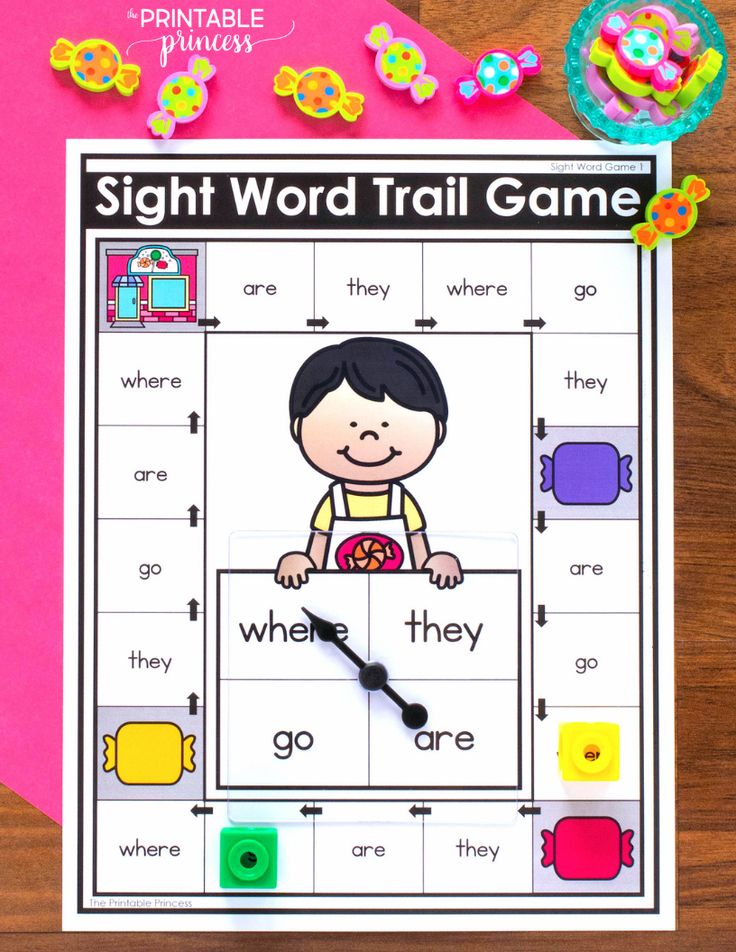 So we did a deep dive into the world of sight words to come up with some games that would help kids remember the most common sight words and make teachers’ lives easier too!
So we did a deep dive into the world of sight words to come up with some games that would help kids remember the most common sight words and make teachers’ lives easier too!
Many of these games are printable, so you can easily use them in the classroom — but there are virtual options too!
How to Play the BOOM Sight Word Game
To kick things off, teacher @misslearningbee shared this sight word game with Teach Starter, and we were instantly hooked not only because it is super easy to set up, but because it has already been tried and tested, and her kids just love it! The best thing about this game is that you can easily differentiate but keep each sight word level together using some rubber bands. Here’s what you need to know:
- Write the chosen sight words on colorful craft sticks.
- Write the word BOOM on a few sticks — this is the key to making this game fun!
- Pair students off to work together (or create small groups!), and set a timer for your desired time.

- Place the sticks in a cup with the word side down.
- Students should then take turns passing the cup, pulling out a stick, and reading the word.
- If they read the word correctly, they get to keep the stick!
- If they pull out a BOOM stick, the other player gets all of their sticks. If they’re in larger groups, the student gives their sticks to their partner or person to their right.
- At the end of the time limit, the person with the most sticks wins!
As an extension or alternative to using Boom sticks as a sight word game, you could do rhyming words, or students could put the words into a sentence. Other ideas include:
- parts of speech
- describing words
- numbers
- addition/subtraction problems.
Sight Word Hopscotch Game
Inspired by hopscotch, this sight word game is an active one that will help them get the wiggles out.
Find a tiled area and write one sight word on each tile with three different colors.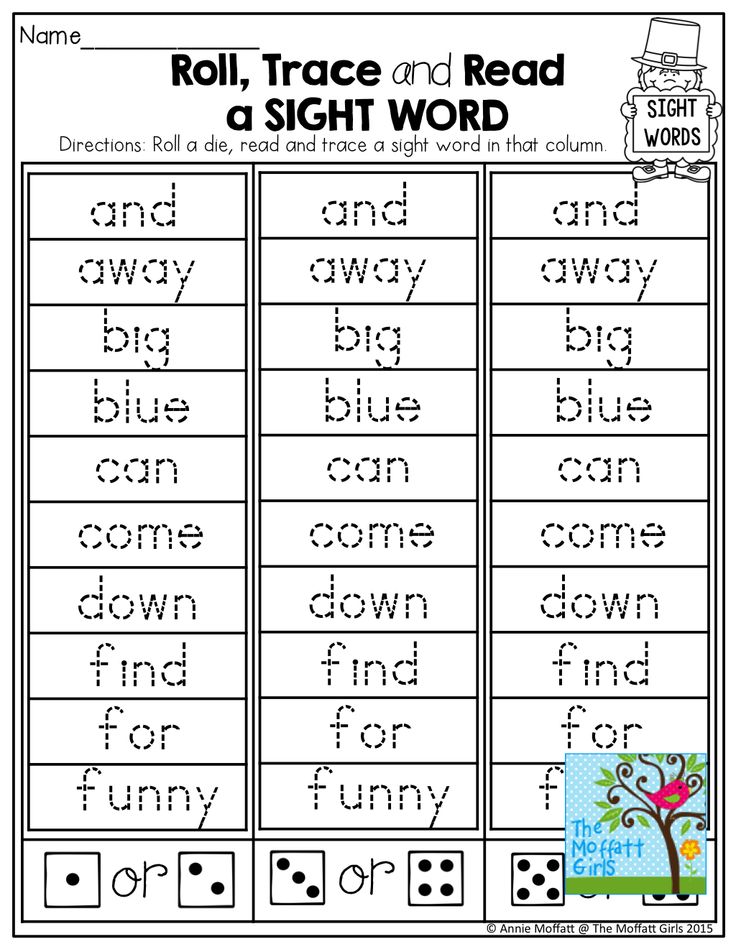 Children then pick a color, and by hopping only on that color sight word, they can get home. They must say each sight word as they hop on it to get to the end.
Children then pick a color, and by hopping only on that color sight word, they can get home. They must say each sight word as they hop on it to get to the end.
Sight Word Fishing Game
It looks basic, but children in my class loved this game — it’s sight word fishing!
Attach paper clips to sight word flashcards, and create a fishing rod with a magnet at the end of the string. In a small group, children take turns trying to fish out a sight word. If they can successfully fish the sight word and say the sight word, they get to keep that flashcard. The child with the most sight word flashcards at the end wins!
Bowling for Sight Words
Pick up a cheap plastic ten-pin bowling set from your local dollar store. Using some sight word flashcards, place a hole punch in the corner, and attach one word to each pin using a rubber band.
Students try and hit as many pins over as they can, then correctly say each of the sight words they knocked over in order to add to their overall score!
Sight Word Popcorn
Print out sight word flashcards on yellow paper and scrunch up just like popcorn.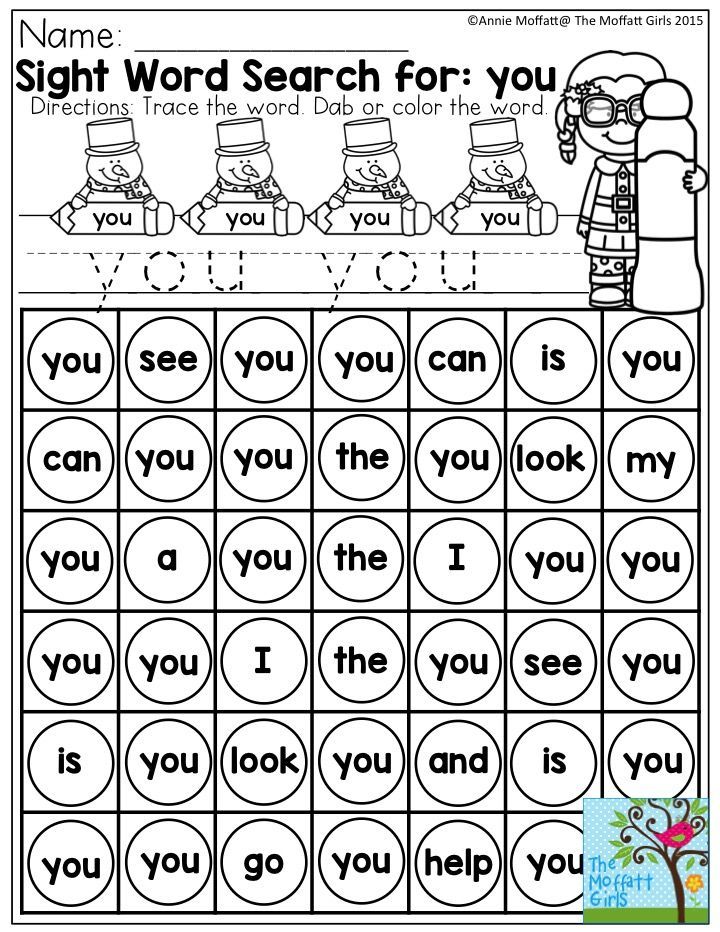 Have students pick a piece of popcorn and read the sight word. If they get it correct they get to keep that piece of popcorn. Who can fill their popcorn bucket first?
Have students pick a piece of popcorn and read the sight word. If they get it correct they get to keep that piece of popcorn. Who can fill their popcorn bucket first?
Printable Sight Word Games
If you are looking for another sight word game that you can play in your reading centers or to send home for some fun sight word practice, we’ve got you covered! Here are some of our sight word games. Although we have used the Dolch Sight Words list of words, you can use the editable version when available to suit the sight words that you may use at your school.
Fishy Find Sight Word Game
For this version of a fishing sight word game, we’ve created the fish you’ll need to get started! Just follow the instructions below!
- Set up a station with a large bowl.
- Attach metal paper clips onto the creatures and attach a magnet to a stick and string.
- To help build word recognition, students need to lower their fishing rod into the bowl, then read the word on the fish they have caught, and then place them in a pile.
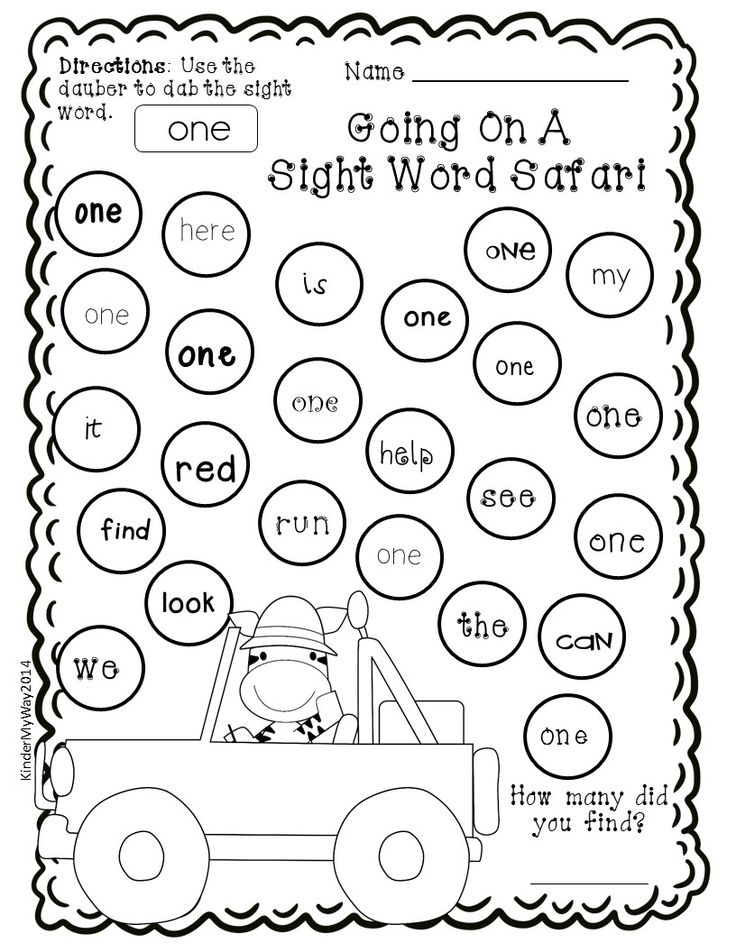
Sight Word Bingo
There was a game to play with sight words, and Bingo was its name-o! (Sorry, we had to!).
This printable sight word game takes classic Bingo and adds the first 100 words on the Fry Sight Words list to make a game the whole class can play! Print them out on sturdy cardstock, and you’ll be able to use the bingo cards, again and again, to help your early readers really nail those crucial words.
Available as a Powerpoint or in Google slides, this is also a great sight word activity for virtual students. Get additional words:
teaching resource
Sight Word BINGO (Fry Word List 101-200)
Practice learning sight words 101-200 on the Fry Sight Word List with our set of 22 Sight Words Bingo cards.
42 pagesGrades: 1 - 2teaching resource
Sight Word BINGO (Fry Word List 201-300)
Practice learning sight words 201-300 on the Fry Sight Word List with our set of 22 Sight Words Bingo cards.
42 pagesGrades: 1 - 2Fun Sight Word Activities
Need other sight word activities that will get your preschoolers and kindergartners excited? These options are not necessarily game-like, but there’s still plenty of fun packed in.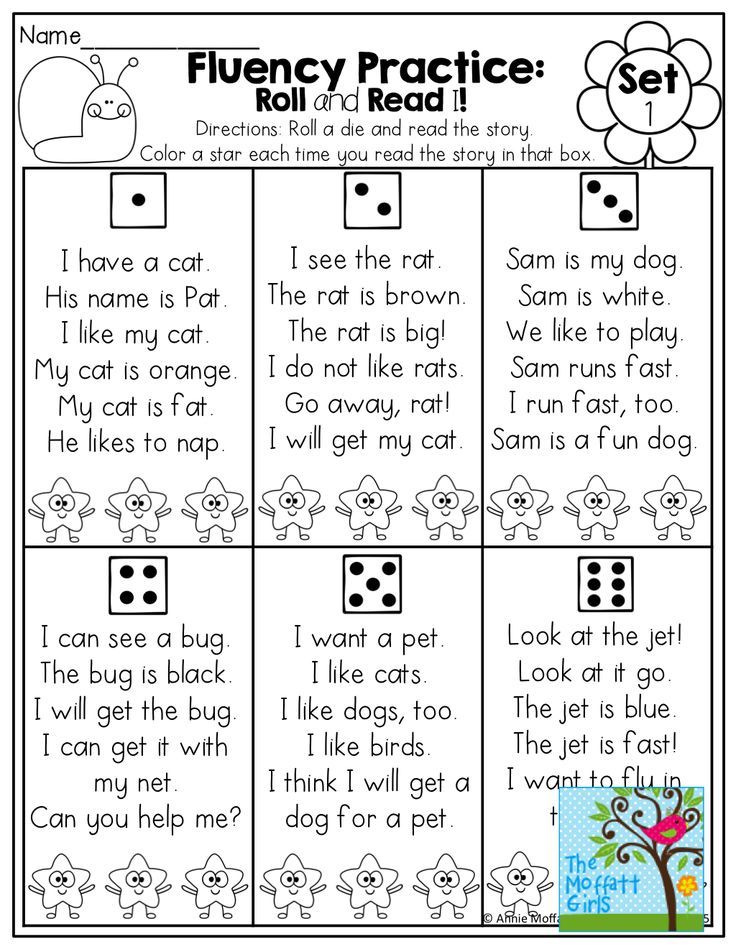
Let Students Write on Their Desks
What’s more fun for kids than the ability to write on the desk?
Use a window marker to write sight words on the desk (don’t worry, the writing comes off easily with a damp wipe). Have students pick three or four sight word flashcards suitable to their level, then have them copy each of the sight words on their desk.
Sand or Rice Writing
Fill a tray with sand or rice in a tray and have students pick sight word flashcards, then write that word in the sand or rice.
Place a sheet of colored paper on the bottom of the tray for a more visually appealing activity.
Sight Word Paper Cup Tower Building
Using paper cups, stick sight words to each cup using a glue stick. Children must correctly say the word on each cup before they can place it on their “sight word tower.” Challenge your students to find out who can correctly say all of the words and create the tallest tower! Bonus: This sight word activity also helps them build those engineering skills.
Play Dough Sight Word “Writing”
Who doesn’t love to play with play dough? Using sight word flashcards, have students pick a word and then create it using play dough. You can also print the sight word cards and send them home for parents to practice sight words at home with their children.
Mess-Free Paint Writing
Put some paint or cheap hair gel in a plastic zip-lock bag, have your students pick sight words, and then use a cotton swab or their finger to write the sight word! Easy-peasy lemon squeezy.
Scratch Paper Fun
Black paper that can be “scratched” to reveal rainbow-colored designs isn’t just good for art class. Encourage your students to write each sight word on the scratch paper to create a colorful list of sight words.
Magic Sight Words Activity
Using a white crayon, write some tricky sight words on a white piece of paper. Children then use watercolor paint to discover their magic words. Can they work out what the magic sight words are? Challenge students by writing a secret sight word message for them to discover!
Can they work out what the magic sight words are? Challenge students by writing a secret sight word message for them to discover!
Want more sight word fun? Check out our mini sight word books!
40 fun things to do this summer
materials for creative activities with children
Spend time with your children or give them ideas for independent play. After all, summer is so short! :)
1. Create a mini golf course. Sticks, balls, and pits or plastic cups buried in the ground are suitable as holes.
2. Wash the car (current car cleanliness is not as important as a fun wet process on a hot summer day).
3. Organize a picnic, but with the hilarious stipulation that all food names must begin, for example, with the letter "P."
4. Draw a target on the fence with chalk and have a water balloon hitting contest.
5. Make a dirt cake and organize a sale
6. Organize a competition for the biggest patch of grass (recommended to use only old clothes ;) )
7. Make wind chimes out of boxes and tins hanging from a tree branch.
Make wind chimes out of boxes and tins hanging from a tree branch.
8. Chalk + sidewalk + camera - make your own background for photos and take pictures.
9. Make a cable car for dolls or figurines.
10. Find a huge puddle and have a paper boat battle.
11. Create a garden for fairies right in the grass near your house.
12. Make papier mache mix - knead, sculpt, create
13. Make pinecone feeders - spread Nutella and sprinkle with seeds and grains.
14. Create a fairyland in a sand bowl for small figurines and toys.
15. Make a crazy obstacle course for the family competition.
16. Create original looks using mom's old cosmetics. Photos of Lady Gaga for inspiration :)
17. Try to hit a basketball hoop with soap bubbles.
18. Use clippings from old magazines and newspapers to make a creepy mystery letter about where the treasure is hidden.
19. Come up with amazing new dishes (leaf soufflé, sand and car cake) and organize a café
20.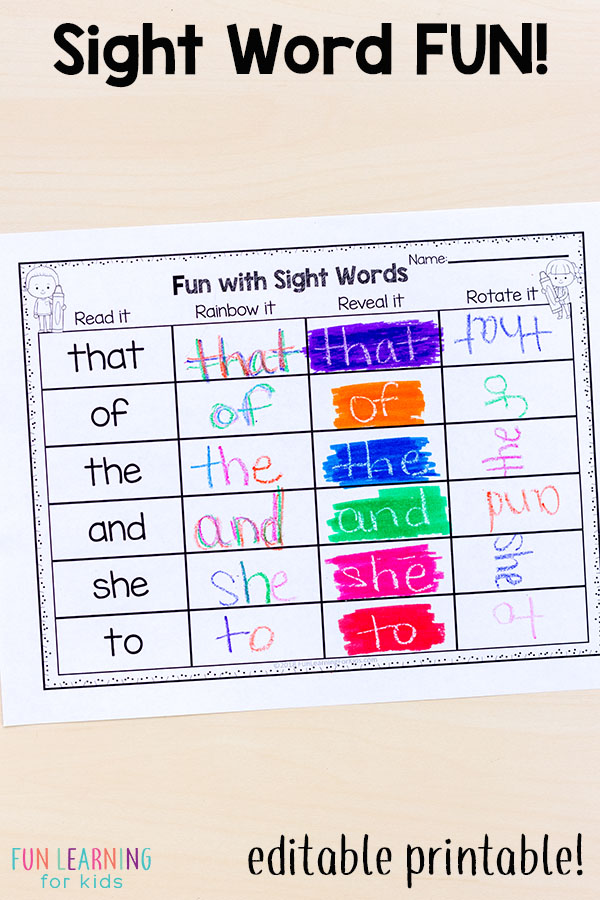 Parents hide toys while children carry out a rescue mission.
Parents hide toys while children carry out a rescue mission.
21. Try a new kind of dough using liquid soap, flour or starch.
22. Two words: Mentos and Diet Coke.
23. Create a time capsule and solemnly bury it in the yard.
24. Take a variety of clothes from home and hold a Cabbage contest - the one who wears the most things wins.
25. Build the tallest tower out of all the toys you have.
26. Use scotch tape, plastic bowls and lids to craft armor.
27. Use pens and felt-tip pens to decorate old T-shirts with creative and silly designs. Go to the store in new T-shirts :)
28. Make an air friend - create a little man out of balloons and dress him in your clothes.
29. Have a mud bath on the beach and play mud monsters.
30. Take the seeds of herbs and spices, mix and plant, and when it grows, guess which is which.
31. Parents bury the treasure, and the children find it.
32. Dress up in a variety of clothes from the baby and parent closet for a variety of incredible and funny looks.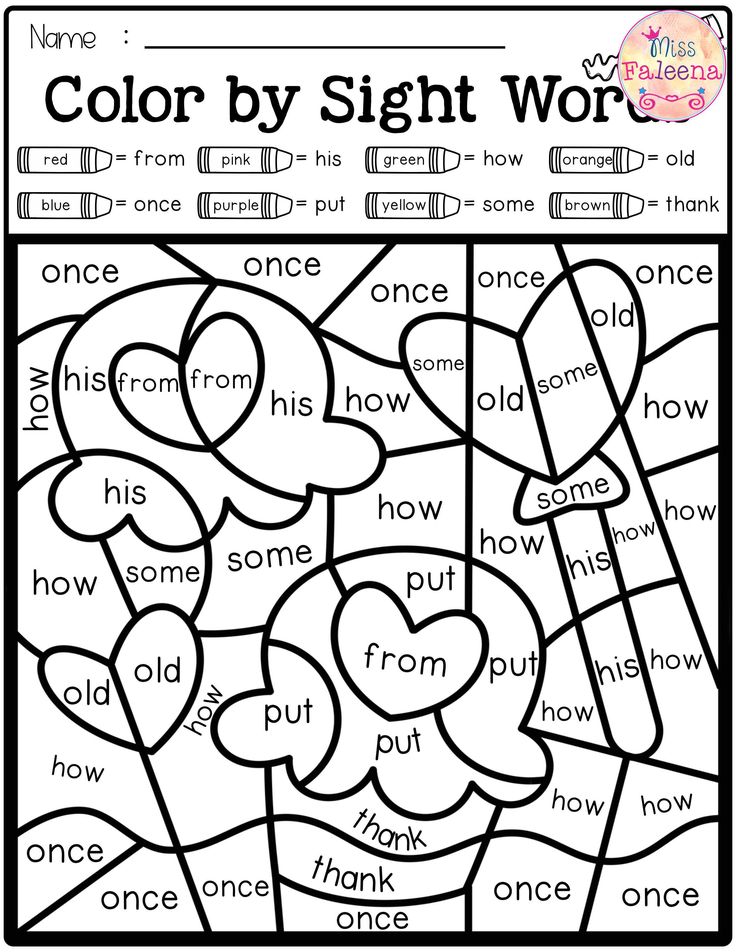 Host a fashion show.
Host a fashion show.
33. Decorate the stones and stick googly eyes to make a stone copy of your family.
34. Collect a super-long chain of dominoes and start a chain reaction of falling dominoes.
35. Create a funny cap or hat for your pet.
36. Boil a huge pot of pasta and organize pasta shootouts
37. Organize water fights with water guns and wet washcloth bombs.
38. Use old crates and boxes to create a robot to protect the surroundings.
39. Trace your shadows on the pavement with chalk and draw funny faces, horns and tentacles.
40. Washable paint + syringe or bottle = fun colorful mess.
What would you add to this list?
7 fun family games. You'll like it!
13301
0
One of the first topics of any textbook for beginners to learn English is "Family". This topic is especially important for a child, because for him the family is the whole world. How to teach children to talk about the closest people in English? Every parent wants the child to know not only the words mother, father, sister, brother, but also to be able to describe other relatives. To quickly memorize a family tree, play exciting games with your child. In this article, you will get to know some of them and will be able to choose which ones are suitable for your students.
How to teach children to talk about the closest people in English? Every parent wants the child to know not only the words mother, father, sister, brother, but also to be able to describe other relatives. To quickly memorize a family tree, play exciting games with your child. In this article, you will get to know some of them and will be able to choose which ones are suitable for your students.
Let's start with the fact that games can be of two types :
- group games (from 4 children and more)
- individual (with tutor or parent).
They can be based on physical activity or logic. The proposed 7 games can be modified and adapted to the needs of the child.
Family tree
Preparatory stage:
The child perceives pictures best of all. Family is always an association with a tree. Show the student a picture of a family tree with colorful characters. Each of which must have a name. The words of family members should be written on a separate sheet (it is possible with transcription):
The words of family members should be written on a separate sheet (it is possible with transcription):
Next, we show a colorful video of Family members so that the child hears the correct pronunciation. We read the words on the card aloud with him.
Rules of the game:
After practicing pronunciation, we start playing. We divide the children into teams, take a picture with the characters of the Simpson family, ask the students to concentrate. Speed game. You ask family tree questions.
- Who is Marge to Bart?
She's a mother.
— Who is Bart to Marge?
- He's a son.
Students should answer as quickly as possible. One correct answer is one point. The team with the most points wins.
To diversify the game, you can ask the teams to ask each other questions or complete sentences:
– Abraham is Lisa’s….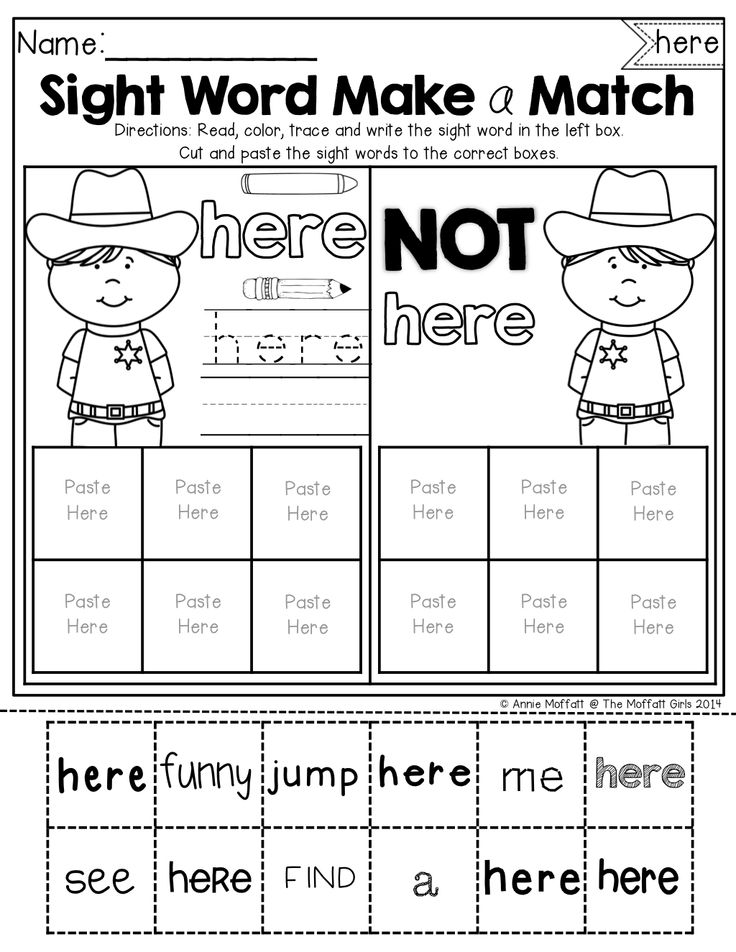
— Marge is Lisa’s….
The number of correct and quick answers is again counted.
You can also complete the sentences yourself incorrectly and ask the teams to correct the error, for example:
- Abraham is Lisa's uncle. Am I right?
No, you are wrong. Abraham is Lisa's grandfather.
This game can also be played with the child individually, limiting the time for answers and indicating the number of points for a good assessment. For example: 12 correct answers - the winner, 9 - second place, etc.
True or not
When the basic words are learned, it's time to add a description to each family member (age, occupation, appearance, character). For example:
Mona is a grandmother. She's 65 years old. She has short blue hair and a big mouth. She's kind and friendly.
Abraham is a grandfather. He's older than Mona. He's 70 years old. He forgets things. He doesn't wor.
After getting to know the characters in the picture, you need to read the descriptions and ask if it's true or not. For example:
For example:
- Lisa is a grandmother. She's 65 years old. She has short blue hair and a big mouth. She's kind and friendly. Is it true?
The task of the student (teams) is to determine the untruth as quickly as possible and give the correct answer.
- No, Lisa's a granddaughter. She's younger than 65. She goes to school. She has yellow hair and a small mouth.
The winner will be the one who gave the most correct answers in the shortest time, for example, 5 minutes.
Fairytale
This game is like making up a story. Let the child pretend to be a writer who wants to write about a family holiday. For example, New Year or Christmas. You can take a picture of the living room and ask the child to describe where he would place each relative. For example:
- Where is your grandmother?
- She is near the fireplace because it's cold.
— Where's your uncle?
- He's at the table because he's hungry.
At the end ask to tell the story of the holiday with the whole family. The winner describes 5 family members, the second place - 3 family members, the third - 2 family members.
Taboo words
This game helps students practice new words.
Divide the class in half and ask the two teams to sit on opposite sides of the room, facing each other. Each team will choose a person to sit in front of their team, face to face in a separate chair. You will stand behind the students and show a piece of paper with an inscription on it. Students sitting in separate chairs will not be able to see the writing. Teams have three minutes, or whatever amount of time you want, to get the players, seated separately, to say a word on paper. The catch is that this word cannot be said out loud under any circumstances. The team that quickly says the word that was written on paper will win.
Chalkboard Pictionary
Divide the class into two teams and have a small column for each team on one side of the board.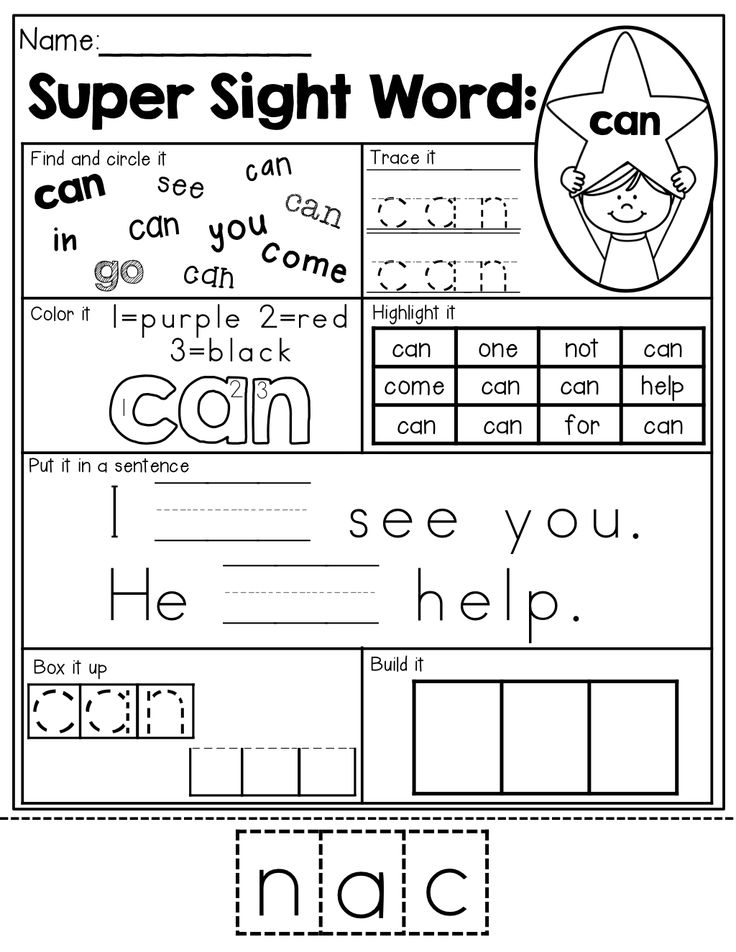 This is where you write down their points. Have one person from the team come forward. Give the student a card with the name of one of the family members and ask them to draw the word. Or you can write the words on slips of paper for students to choose at random. The student must convey the word to his team only by drawing on the board. Words, symbols, or hand gestures may not be used. Limit the time to a maximum of three minutes. Each correct word is a point, and the team with 5 points is the winner.
This is where you write down their points. Have one person from the team come forward. Give the student a card with the name of one of the family members and ask them to draw the word. Or you can write the words on slips of paper for students to choose at random. The student must convey the word to his team only by drawing on the board. Words, symbols, or hand gestures may not be used. Limit the time to a maximum of three minutes. Each correct word is a point, and the team with 5 points is the winner.
The Theater
Let's turn our attention to the outdoor game. The essence of this game is expressed in the title. The child should introduce himself as one of the family members, but do not tell anyone about it. Further, he must not only show his hero, but also describe what he shows. For example:
- I like to get up early in the morning and read a newspaper in the armchair. (The child sits on a chair and reads a newspaper).
Are you a grandmother?
- No. I'm not a grandmother.
I'm not a grandmother.
Are you a grandfather?
- Yes. I'm a grandfather.
Important! According to the rules of the game, all words about family members must be repeated by the players. The one who guesses the most on the first try wins.
Opposites
When the child has learned the words well, this game will not be difficult for him. The players throw the ball to each other, the one who has it in his hands must name the opposite word and throw it back, for example:
- Grandmother - grandfather
- Uncle - aunt
- Son - daughter.
To diversify the game, you can add new words by asking them to replace the familiar part of the word and explaining the meaning:
- Son-in-law - daughter-in-law
The number of points is calculated for each correct answer. The winner is the one who scores 10 points first.
Be sure to reward and praise the children for their excellent play at the end of the games.